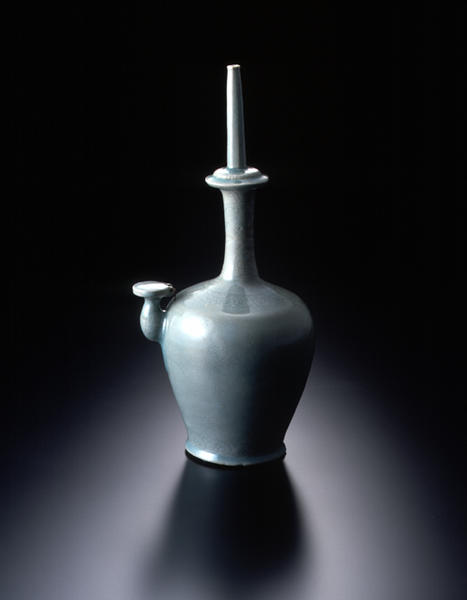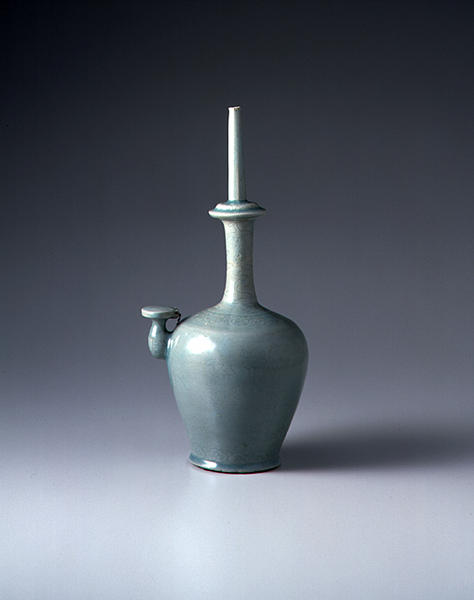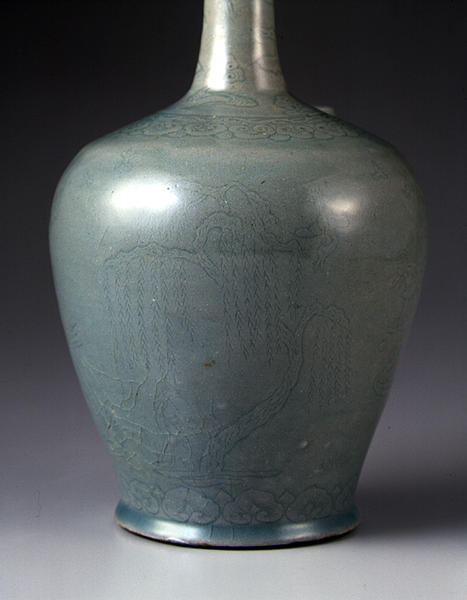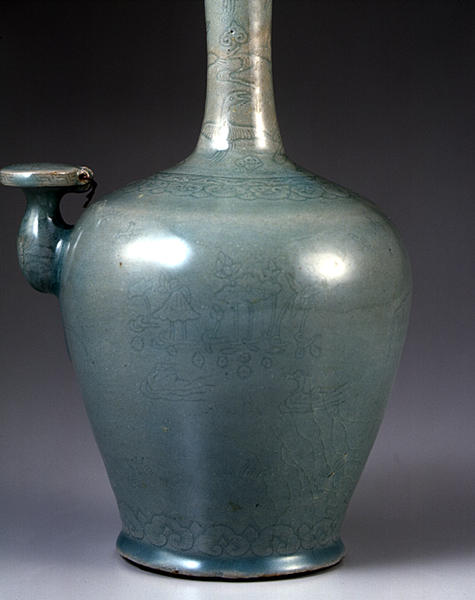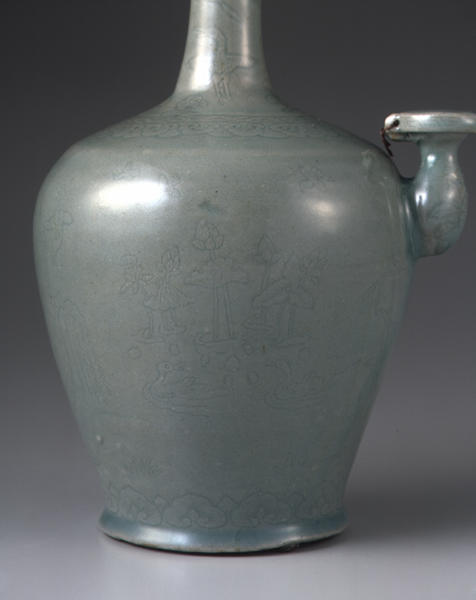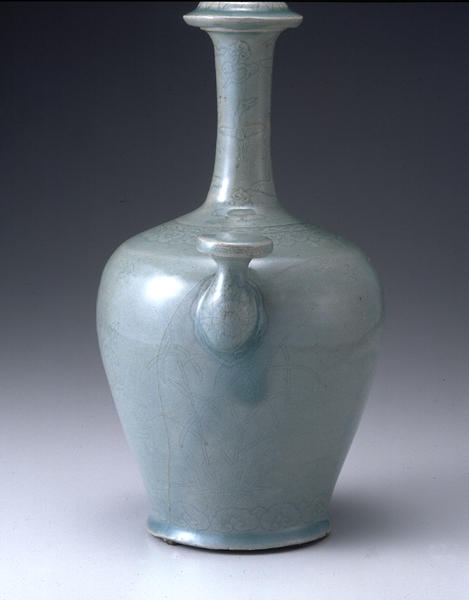Sprinkler with Willow and Bird Design
- Korea
- Korea, Goryeo dynasty
- 12c
- Celadon with carved and incised decoration
- H-35.6 D-17
Catalogue Entry
The Koryo dynasty was the first nation to unite the Korean Peninsula. It prospered for 475 years, from 918 to 1392, in spite of pressure from Northern peoples such as the Mongols. Bud-dhism was the state religion of the Koryo dynasty, and the people built a number of temples all over the country as a symbol of their wish for the nation's stability and peace. Accordingly, Buddhist arts became highly developed. A sprinkler like this one is an example of such works.
A sprinkler is a kind of ewer that holds the water offered to a Buddhist altar. Although sprinklers were originally made of metal, such as copper, for use on an altar, they also came to be used in daily life; thus, in the 12th century numerous celadon sprinklers were produced. This sprinkler is carved with a design depicting water fowls on a lotus pond around the body of the vessel, reeds on the spout, and a willow tree and a crane on the back all exquisitely and delicately carved in lifelike detail. Around the shoulder and the bottom of the vessel, nuyi pattern (lapet or cloud collar pattern) is placed, and clouds and a crane are depicted at the lowest part of the vessel's neck. The part immediately above the sharp-angled base is decorated with a cloud motif. This sprinkler is well-balanced, and, with a beautiful jade-colored glaze and the cover of the spout still intact, it represents an excellent example of this type of vessel. On the bottom more than ten spurs remain visible.
